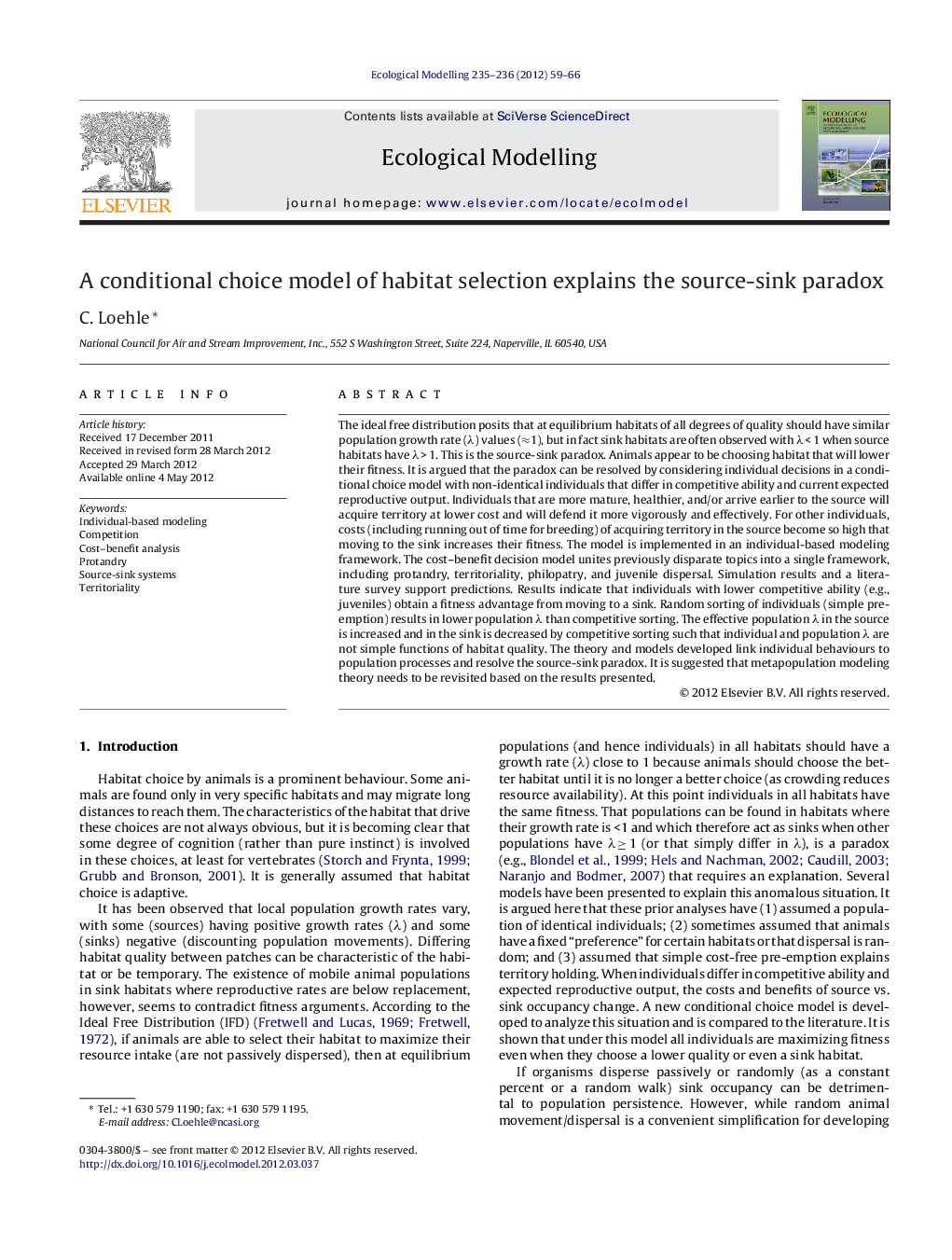| Article ID | Journal | Published Year | Pages | File Type |
|---|---|---|---|---|
| 4376449 | Ecological Modelling | 2012 | 8 Pages |
The ideal free distribution posits that at equilibrium habitats of all degrees of quality should have similar population growth rate (λ) values (≈1), but in fact sink habitats are often observed with λ < 1 when source habitats have λ > 1. This is the source-sink paradox. Animals appear to be choosing habitat that will lower their fitness. It is argued that the paradox can be resolved by considering individual decisions in a conditional choice model with non-identical individuals that differ in competitive ability and current expected reproductive output. Individuals that are more mature, healthier, and/or arrive earlier to the source will acquire territory at lower cost and will defend it more vigorously and effectively. For other individuals, costs (including running out of time for breeding) of acquiring territory in the source become so high that moving to the sink increases their fitness. The model is implemented in an individual-based modeling framework. The cost–benefit decision model unites previously disparate topics into a single framework, including protandry, territoriality, philopatry, and juvenile dispersal. Simulation results and a literature survey support predictions. Results indicate that individuals with lower competitive ability (e.g., juveniles) obtain a fitness advantage from moving to a sink. Random sorting of individuals (simple pre-emption) results in lower population λ than competitive sorting. The effective population λ in the source is increased and in the sink is decreased by competitive sorting such that individual and population λ are not simple functions of habitat quality. The theory and models developed link individual behaviours to population processes and resolve the source-sink paradox. It is suggested that metapopulation modeling theory needs to be revisited based on the results presented.
► An Individual-Based Modelling framework is developed to explain the source-sink paradox. ► With this model, individuals choose the habitat where their fitness is highest. ► Proper consideration of individual differences explains many behaviors. ► The theory and models developed link individual behaviours to population processes and resolve the source-sink paradox.
